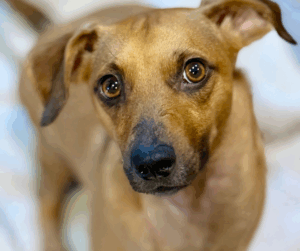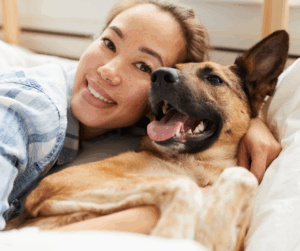Michael Baugh CDBC
We want to trust our dogs. It’s hard when they have a history of aggressive outbursts, though. Many of my clients tell me, “I don’t want to worry all the time.” I understand that. Our trust returns as our dog’s behavior changes.
 I think our dogs want to trust us, too. We control so much of their lives, the people they encounter, the sights and sounds, and the spaces they have to navigate. How our dogs make choices depends on how we set up their environment.
I think our dogs want to trust us, too. We control so much of their lives, the people they encounter, the sights and sounds, and the spaces they have to navigate. How our dogs make choices depends on how we set up their environment.
Can our dog trust us?
St. Francis of Assisi, the patron saint of animals, teaches us that we build trust with actions. “Start by doing what is necessary; then do what is possible; and suddenly you are doing the impossible.” St. Francis echoes the philosophers Aristotle and the Buddha, who also taught compassionate action to build and nurture trust.
When we are helping fearful and aggressive dogs, we are teaching them they are safe. This is sometimes hard. Many dogs have a history of being betrayed or hurt. The world and the humans in it have not been safe for them. If we follow the wisdom of ancient philosophers and saints, we begin with simple, patient acts, and transformation follows naturally. Trainers and dog guardians don’t change a dog’s behavior. Our compassion creates a space for them to change themselves.
Here are some dos and don’ts.
🚫 Don’t punish your dog for having feelings. Be safe and limit your dog’s ability to hurt someone or himself. But scolding or physically hurting your dog never helps.
🚫 Don’t bribe your dog into a scary situation using food. I see this most often when people use treats to lure their dogs closer to new people, or worse yet, the veterinarian.
🚫 Don’t rush. Avoid demanding behaviors you haven’t taught yet or that are too hard to perform in stressful situations. This can make your dog’s fear and aggressive displays worse.
✅ Use food to teach reliable, calm behavior. Dogs love patterns for navigating tough situations.
✅ Gently support your dog through challenges. It helps.
✅ Practice routines in low-stress situations and build the difficulty level gradually. (see “Don’t Rush” above).
“Not to hurt our humble brethren [the animals] is our first duty to them; but to stop there is not enough. We have a higher mission: to be of service to them whenever they require it.” – St. Francis of Assisi
You are your dog’s safe place. Keep that in mind as you go. Yes, living with a dog who has big feelings is stressful. I walk that path with my clients every day. But here is what else is true. Our dogs, especially our dogs with emotional challenges, have so much to teach us. They make us better people, more patient, more compassionate. Smarter. They teach us how to walk the earth more lightly, more lovingly. With them. With each other.
Michael Baugh specializes in aggressive dog training. He is an avid student of dogs and the human condition.


